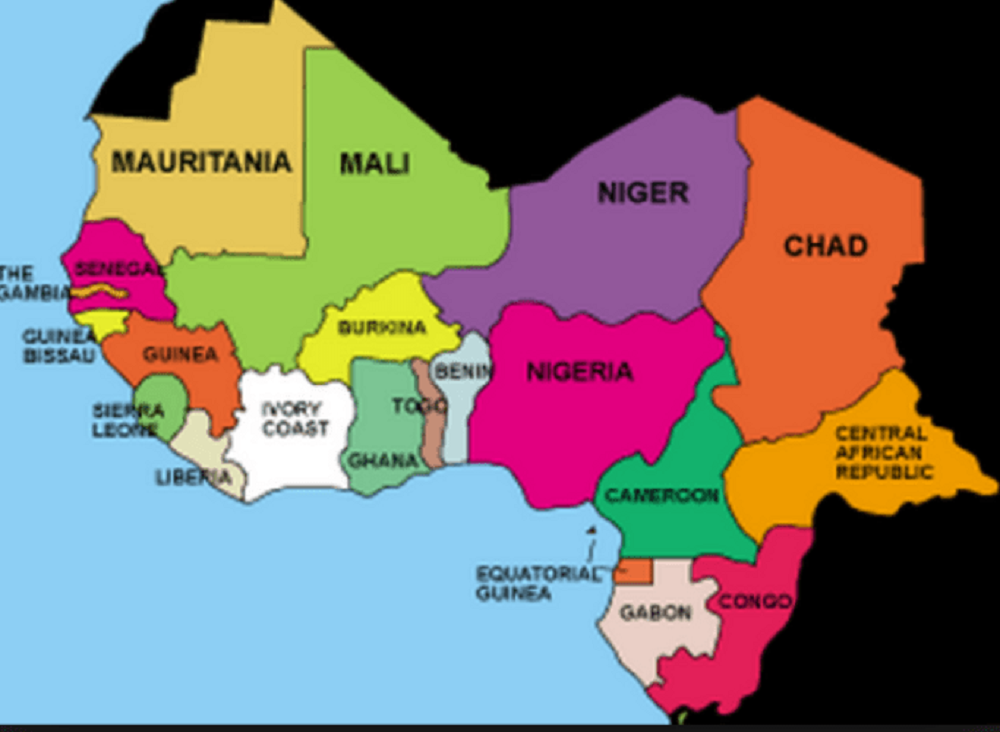MARKETS AND ECONOMY
Côte d’Ivoire, Ghana, Nigeria as Bright Spots of West African Economic Growth
Published
3 years agoon

The African Development Bank (AfDB) has identified the trio of Côte d’Ivoire, Ghana and Nigeria as the leading economies to lift the gross domestic product (GDP) of the West Africa sub-region in the medium term.
This projection is contained in its latest report, Africa’s Macroeconomic Performance and Outlook (MEO) 2023 launched recently.
Read Also:
According to the report, growth in West Africa is estimated to have slowed to 3.6 percent in 2022 from 4.4 percent in 2021, while the region is projected to pick up in the medium term, to 4.1 percent in 2023 and 4.3 percent in 2024.
While growth decelerated all countries of the region in 2022 safe for Gambia, Guinea, Niger, and Togo, it is expected that sustained economic performance in the region’s more diversified economies will drive average regional growth to 4.1 percent in 2023 and 4.3 percent in 2024.
What AfDB is saying:
In Ghana, growth dipped to an estimated 3.6 percent in 2022 from 5.4 percent in 2021, weighed down by deep macroeconomic imbalances—higher inflation, depreciating local currency, and high public debt, estimated at 91 percent of GDP
In Nigeria, the region’s largest economy, growth is estimated to have declined to 3.0 percent in 2022 from 3.6 percent in 2021, but still above the country’s population growth rate of about 2.4 percent.
However, Nigeria has suffered from a protracted decline in oil production due to technical inefficiencies arising from aging infrastructure and theft, limiting the gains from high international oil prices.
It is also experiencing deep macroeconomic imbalances, underpinned by a costly subsidy on fuel, near 20-year high inflation, and foreign exchange shortages that drove rapid depreciation of the national currency, further eroding citizens’ purchasing power.
Uncertainty about policy continuity in the aftermath of the 2023 general elections, coupled with rising insecurity, has dampened investor confidence, which in turn has constrained investment, further weakening the country’s growth prospects.
Against these headwinds, real GDP growth is projected to remain tepid at 3.1 percent in 2023 before slowly picking up to 3.3 percent in 2024.
In Côte d’Ivoire, investment in strategic logistics infrastructure, expanded construction projects to meet growing urbanization, and planned energy projects to enhance the country’s renewable energy sector are projected to boost growth from an estimated 6.8 percent in 2022 to 7.2 percent in 2023.
Senegal, poised to become an oil and gas exporter in 2023 and capitalizing on a recovery in tourism and agricultural output, could ascend to the list of Africa’s fastest growing economies. In this context, growth in Senegal is projected to accelerate from 4.7 percent in 2022 to 10.2 percent in 2023.
Across the Continent
Meanwhile, West Africa combined with other sub-regions, the report estimates Africa’s average GDP to stabilize at 4% in the next two years, up from 3.8% in 2022.
While growth in North Africa is estimated to have declined by 1.1 percentage points, to 4.3 percent in 2022 from 5.4 percent in 2021, growth in the region is projected to stabilize at 4.3 percent in 2023, supported by the expected strong recovery in Libya and Morocco, countering the projected slowdown in Algeria and Egypt.
Growth in Central Africa is estimated to have risen to 4.7 percent in 2022 from 3.6 percent in 2021. The broad-based growth benefited from high commodity prices for a region with net exporters of crude oil, minerals, and other commodities.
Growth is projected to decline slightly to 4.3 percent in 2023 and to stabilize at 4.2 percent in 2024 as global demand picks up and domestic conditions strengthen to support consumer demand and investment, following risk aversion induced by the COVID-19 pandemic.
Economic growth in East Africa is estimated to have moderated to 4.2 percent in 2022 from 5.1 percent in 2021, and is projected to rise to 5.0 percent in 2023 and 5.4 percent in 2024.
Growth in Southern Africa is estimated to have remained tepid in 2022, declining to 2.5 percent from 4.3 percent in 2021, reflecting persistent weaknesses in South Africa, the region’s largest economy and main trading partner. South Africa’s real GDP growth more than halved, to 1.9 percent in 2022 from 4.9 percent in 2021, due to subdued global demand, power outages, and devasting floods that affected industrial production in KwaZulu-Nata.
In the medium term, however, persistent weakness in South Africa will continue to weigh on the region, with real output projected to decelerate to 2.3 percent in 2023 before rising to 2.8 percent in 2024, largely reflecting broadbased improvement in economic conditions, led by Mozambique, where economic growth is projected to expand by 3 percentage points to 8 percent.
Share this:
- Click to share on X (Opens in new window) X
- Click to share on Facebook (Opens in new window) Facebook
- Click to share on WhatsApp (Opens in new window) WhatsApp
- Click to share on Pocket (Opens in new window) Pocket
- Click to share on Telegram (Opens in new window) Telegram
- Click to email a link to a friend (Opens in new window) Email
- Click to share on LinkedIn (Opens in new window) LinkedIn
You may like


AfDB, Invest in Africa Sign $850,000 Deal to Create Green Jobs in Ghana and Senegal


Africa Looks Inwards for Financial Sovereignty amid Falling FDI and Grants


Nigeria Launches $510m SAPZ Agricultural Revolution Backed by AfDB


AfDB Basks in Global Recognitions for Transforming Africa with $318bn Capital Base


AfDB, US Sign $700,000 Credit Rating Deal to Boost Africa’s Capital Flow


AfDB Partners PowerGen, others to Deliver 120 Megawatts of Renewable Power












